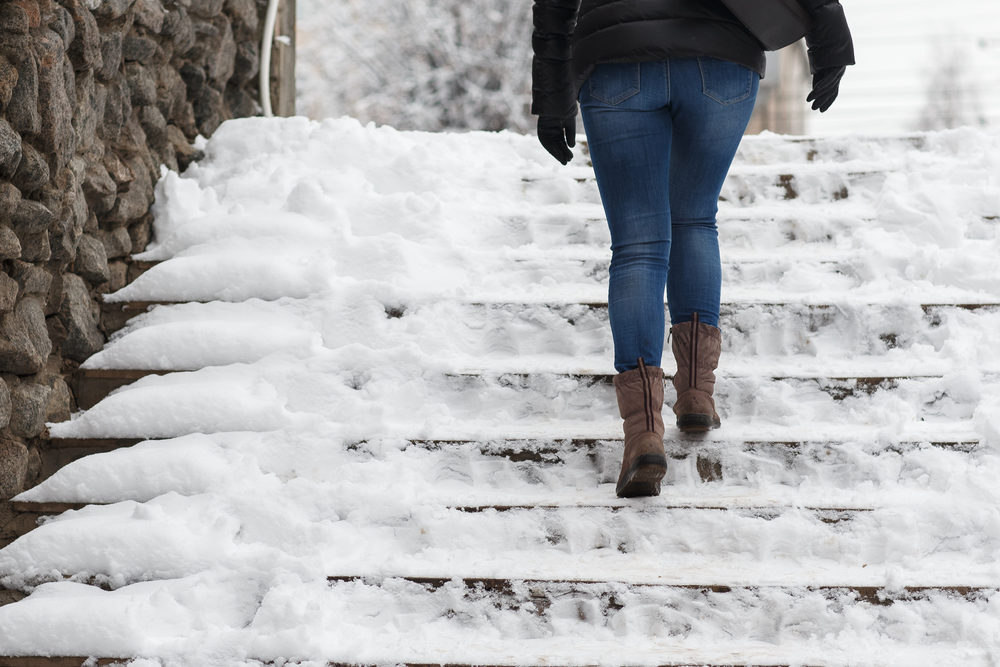Take these three precautions to avoid orthopedic injuries this winter.
The winter months bring ice, snow, and slippery conditions — and for many people, a greater risk of orthopedic injuries. When attempting to traverse icy sidewalks or steps, you can easily lose your footing and fall, resulting in a broken arm, wrist, or hip. The repetitive action of shoveling snow or scraping ice off your car can strain the back, neck, and shoulder muscles, as well.
Going about your daily activities in the winter requires some precautions to avoid broken bones and overtaxed muscles. Fortunately, there are simple ways to protect yourself from serious injuries in the ice and snow.
1. Keep Your Walkways Clear
You have less of a chance of taking a spill on a sidewalk that’s been cleared of snow and ice. Make sure to shovel your walkways, sprinkle on salt to melt ice, or layer some sand on the ground to provide traction. And because melting snow can turn to ice when temperatures plummet, re-apply the salt and sand to keep sidewalks safe.
Before you set out to shovel your sidewalk, stretch your muscles to prevent strains. Shoveling snow can strain the shoulder and back muscles, so take a break and rest a bit if you feel tired or achy. Since elderly people are most at risk of a serious fracture from a fall, it’s often best to hire someone else to clean their walkways.
2. Walk Carefully
Even surfaces that appear free of ice could be covered in “black ice” that is not apparent to the naked eye. Be sure to carefully inspect walkways for hidden sheets of ice.
If you must cross over ice, go slow, shortening your strides and lifting your leg from the thigh. Land your feet flat on the ground. This will keep you balanced and less likely to fall. Wear winter shoes with sturdy rubber soles that provide traction on slippery surfaces. Don’t carry heavy objects when you walk over ice, as it could throw off your balance and cause you to trip and fall. Check for icy surfaces as you exit your vehicle, or hang onto your car for extra support.
3. Fall the Right Way
Most broken arms and wrists occur when you try to break your fall by extending your arms out in front of you. Although that’s a natural reaction, it can lead to serious fractures or a wrenched back.
Instead of stiffening your body, roll loosely into the fall and try to land on your side or shoulder. You may be bruised, but if you land softly you won’t end up with a broken bone or dislocated shoulder. If you find yourself falling on your back, protect your head as much as possible by tucking in your chin.
Stay Safe This Winter
If you are injured this winter, there are some at-home treatments you can try for minor aches and pains. Minor strains can be treated with a combination of hot or cold compresses, rest, and over-the-counter pain medications. If you experience severe swelling or persistent pain, however, visit an orthopedic specialist to assess the injury. And if you suspect you’ve broken a bone, go to the doctor immediately for treatment.
The specialists at New York Bone & Joint treat a variety of orthopedic injuries. We’ll diagnose your injury and recommend the right treatment option for you. Contact us today to set up an appointment.




